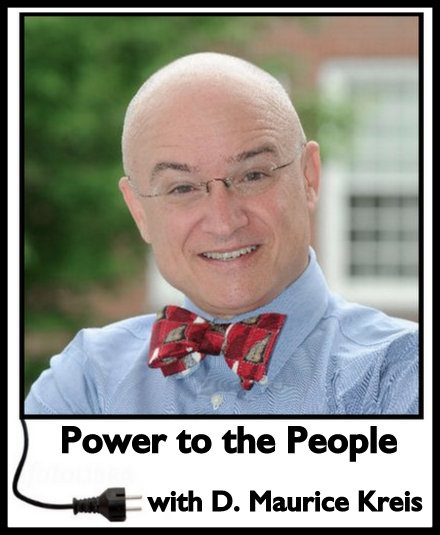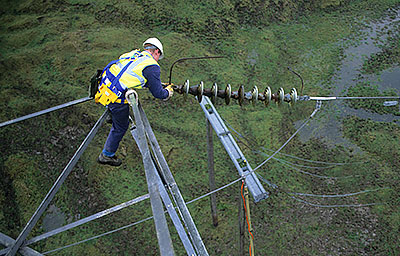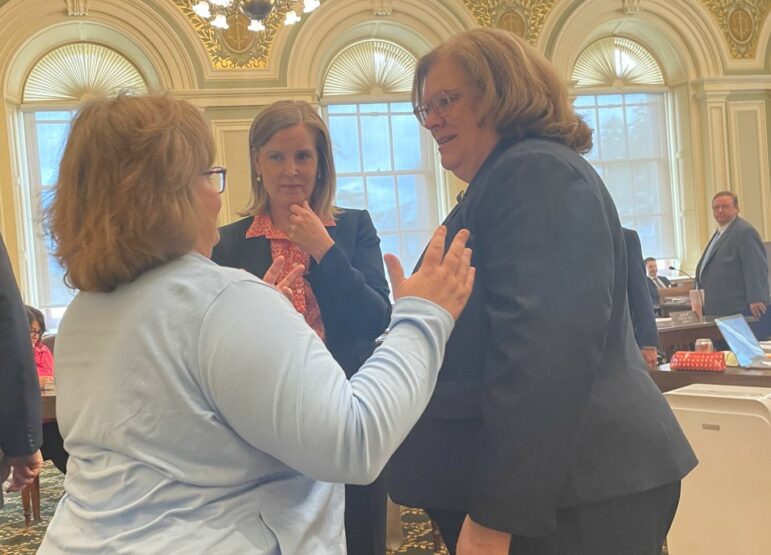Power to the People is a column by D. Maurice Kreis, New Hampshire’s Consumer Advocate. Kreis and his staff of four represent the interests of residential utility customers before the NH Public Utilities Commission and elsewhere. It is co-published by Manchester Ink Link and InDepthNH.org and distributed as a public service to news outlets across the state.
By D. Maurice Kreis, NH Consumer Advocate
Eversource plans to make its big rate case filing next week at the Public Utilities Commission (PUC), so the company spent this past week dropping two big and distracting glitter bombs.

The first is Eversource’s “Westmoreland Community Battery Demonstration Project,” proposed for a Cheshire County community of less than 600 households that happens to be served by just one distribution line. If that line breaks, in a storm or otherwise, Westmoreland is without electricity.
Rather than build a second distribution circuit to connect Westmoreland to the rest of the grid at an estimated cost of $6 million, Eversource proposes a so-called “non-wires alternative” (NWA) project. The NWA initiative has three components: energy efficiency investments, a BYOB (bring your own battery) program, and Eversource’s plan to buy its own battery – a huge one that can deliver 1.7 megawatts (or 7.1 megawatt-hours) of electricity.
What sort of BYOB party does a utility throw? Customers in Westmoreland could buy a Tesla PowerWall or a similar behind-the-meter battery and Eversource would pay the customers a premium price for their energy, exported to the grid during times of peak demand or system outage.
Glitter bomb number two is the “Durham-UNH Community Microgrid Demonstration Project.” UNH is already a microgrid, by virtue of the university’s on-campus generation facility which employs landfill gas and can be used to keep the lights on at UNH when the rest of the grid goes down. Eversource proposes to expand that capability to a wider area that would include most of downtown, Durham’s wastewater treatment plant, and a solar power project the utility would develop in the neighborhood.
According to Eversource, the primary benefit of the Durham microgrid project would be “resiliency.” Like all of the buzzwords in the world of regulated utilities, that one makes me nervous as a ratepayer advocate.
So, I asked Eversource NH President William Quinlan what he means by “resiliency.” He distinguished it from reliability (the basis electric utilities usually invoke for massive investments that get into rates) by characterizing resiliency as the ability to recover from major as opposed to routine service interruptions – i.e., the kind of outages caused by hurricanes, nor’easters and no-goodniks with computer skills.
Make no mistake, the Westmoreland and Durham projects are virtuous initiatives. Our office, which represents the interests of residential utility customers, has long been prodding utilities to embrace NWAs – especially those that lead with targeted energy efficiency because that is typically the most cost-effective way to avoid old-fashioned, expensive upgrades. The General Court has embraced both utility-scale batteries and microgrids this session.
Eversource is well aware of this. But if you wonder whether the state’s biggest electric utility throwing two alluring projects like these into its rate case as a means of distracting the public from other, less endearing aspects of its plan to increase distribution charges – well, that would make you a cynic.
As it happens, “the Cynic” was my sixth-grade teacher’s nickname for me.
I’m also a big fan of the “used and useful” principle, as regular readers of this column know. If an investment isn’t already out there and being used to provide actual distribution service to Eversource customers, it does not belong in Eversource’s distribution rates. That applies to Eversource’s now-dormant scheme to put natural gas pipeline costs into distribution rates, to economic development initiatives no matter how laudable, and to microgrid and NWA projects that are not even under construction yet. Remember that for the past 40 years, it has been illegal in New Hampshire to put CWIP (construction work in progress) in utility rates.
Eversource knows this, of course, which is why the two projects are expected to appear in the rate case as proposals for future inclusion in rates. Which makes them distractions from what Eversource wants to include in rates now – i.e., as of July 1.
Eversource plans to seek recovery of costs associated with the 2010 creation of the company, via the merger of Connecticut-based Northeast Utilities (then the owner of Public Service Company of New Hampshire) and Boston-based NStar. Utilities love to seek recovery of costs associated with such transactions, which enrich shareholders, on the theory that mergers produce “synergies” that also benefit customers.
The rate case is expected to seek an increase of $82 million in the utility’s annual distribution revenue requirement, offset by $12 million in annual benefits arising out of the 2018 federal tax reform bill. Large industrial customers would see their distribution rates go up by 1.8 percent – which makes the proposed increase for residential customers, of 7.3 percent, seem whopping by comparison.
And keep in mind that these are just the distribution rates; the rate case does not include transmission costs, energy charges, and the system benefits charge (which pays for energy efficiency programs and assistance to low-income customers).
The utility plans to ask for four years of automatic rate increases beyond the $82 million it would like to add to its revenue requirement as of July 1. It plans to seek a “tracker” mechanism for so-called grid modernization investments – a special charge that arguably should be part of regular distribution rates because modernizing the grid (and thus providing service to customers on a least-cost basis) is a key aspect of Eversource’s longstanding, basic obligation as a monopoly provider of electric distribution services.
Finally, Eversource plans to cling to its heads-I-win-tails-you-lose mechanism for replacing revenue lost to energy efficiency but needed to cover the utility’s fixed costs. We continue to press for a mechanism that is symmetrical – one that also reduces rates when the utility rakes in extra money if load grows, via anything from extra-cold weather to people buying electric vehicles.
You might be wondering: How do I know so much about Eversource’s rate case since it will not be filed until May 28? The answer is that Eversource provided the Office of the Consumer Advocate, and the Staff of the PUC, with an advance briefing this week and distributed a document marked “privileged and confidential” featuring many of the details cited above.
That was fine until Eversource decided to unleash a publicity barrage that resulted in most of the major media outlets in New Hampshire, and even the trade publication Utility Dive, offering fawning coverage of the NWA and microgrid initiatives that happen to be the aspects of next week’s rate case filing the utility wants you to be thinking about.
We are not obliged to facilitate Eversource’s carefully orchestrated rate case
messaging campaign. NWAs and microgrids
may be good for consumers, but a rate case demands sober and exacting scrutiny,
in the media as well as at the PUC, of all
costs this regulated monopoly seeks to pass along to its captive customers.





